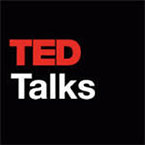On memorial day of 2012 my closest friend in science died : Norm Letvin. A year later two memorials were held at Harvard honoring his memory. It started all with music as he would loved it. A year after he died I still think of him, about once a week on average and what I miss most is, hearing his voice talking about opera and chamber music. On the first musical Memorial Service opera lost out, but chamber music was all over. The Memorial Service was held in Harvard’s neogothic ,heavily decorated Sanders Theater. The highlight was, of course, Norm himself. His recording, as a 16 year old, of Mozart’s Clarinet Quintet in A major K.581 opened the ceremony, shortly thereafter followed by the Alla Polacca from Carl Maria von Weber’s Clarinet Concerto no.2 in E flat major Op.74, recorded in december 1965. His long-term friends paid tribute with the Kaddisch of Ravel, the Brahms Clarinet Quintet in b minor Op.115, the Beethoven piano trio Op.1 No.2, the Mozart Flute Quartet No.1 in D Major K.285, the Bach Italian Concerto, BWV 971 and the Beethoven quartet No.13 in Bb Major, Op.No.130. A day of music never to be forgotten.
The day after, March 19, the Science friends of Norm took the stage at the Armenise Amphitheater of Harvard Medical School. Norm’s best friend Bart Haynes opened the first session and I was speaking in the third in the afternoon after David Baltimore and Gary Nabel. I had decided to make my talk very personal and address the family of Norm in particular. Norm never liked scientists showing off how smart they were or are. I decided to talk about monkeys and apes, the kind of studies linking the work of Norm and myself, in every other aspect very different.
” I will speak today as if we are celebrating thirty-three years in science of Norm Letvin and if he is sitting here in front of me. I consider myself a mentee of Norm in the areas of music and child rearing. I decided to talk today about a shared love of ours: the non-human primate. The non-human primate not only as the experimental animal for our vaccine studies but also as the close relative of us all.”
” Norm considered me his ‘ crazy’ friend. Not so much because he considered me mad or anything, but because I did so many crazy studies, a scientist in his normal frame of mind would never considered doing. Bart Haynes he considered his ‘ non-crazy’ friend. Norm chose me as his friend, and I was honored. For Norm the best was barely good enough. Technically your science should be executed the best way possible, never overstated, rather understated. Doing a good experiment was more important to him than the outcome, you could never be right just by guessing. And even if you turned out to be right in the end, it was dishonorable to Norm, if there were not the experiments to back a claim up.”
” I am still surprised Norm accepted me as a friend. Firstly your ( or my) science should meet his incredibly high standards. I did not consider myself in his class. Secondly, you had to be a family man ( and I am), but again so much as Norm did for and with his family, that standard is too high for me. And lastly you had to be a ‘mensch’, a giving and generous human being, and again I do not consider myself ‘mensch’ enough. Norm was genuinely a ‘mensch’. A man who had an immensily strong sense of right and wrong, a sort of person other people look up to.”
Norm kept his scientist and artist life strictly apart, other friends, other venues. In that sense I was different, I moved around in both worlds without feeling misplaced in either of them. Norm played for his science friends once a year, but that was it.
Norm and I are ‘monkey ‘ men. I might have started to work and publish on monkeys somewhat earlier than Norm. Both Norm and I moved in 1978 to Nobel labs, I moved to Gajdusek’s lab at NIH, Norm moved to Benacerraf’s lab at Harvard . I published with Gajdusek my first scientific paper on the Evidence for and against the transmissibility of Alzheimer’s disease to non-human primates in September 1980 in Neurology, while Norm published with Benacerraf his first paper, not on monkeys, in May of the same year in PNAS. We both learned the trade from Nobel laureates, Benacerraf won his in 1980, Gajdusek his in 1976. Norm was there when it happened, I came two years after the fact to the Nobel winning lab.
Norm worked before me on AIDS in monkeys. He published in May 1983 his breakthrough paper in the PNAS on AIDS in rhesus macaques, while I was still trying to understand AIDS in humans. I published my first AIDS paper on a neutralization epitope with a conserved structure that elicited early type-specific antibodies in experimentally infected chimpanzees in june 1988 together with Gibbs and Gajdusek. Clarence Gibbs was the one in Gajdusek’s lab who did all the non-human primate experiments and was undeservingly left out of the Nobel Prize in 1976. While Norm developed the SIV macaque model for AIDS , did I move on towards trying to prove that AIDS originated from monkeys. Crazy studies, Norm would say.
Following the paper of Svante Paabo in Nature on the molecular cloning of Ancient Egyptian Mummy DNA in 1985, I started a decade-long quest to isolate SIV from ancient egyptian monkey mummies. I discovered how monkeys were mummified in ancient Egypt and identified the exact species, olive babboons and Barbary macaques , that were used for mummification. DNA was recovered from these mummies, but nothing but contaminated DNA was found after all these years. I became specialized in the phylogeny of african primates as well as an expert in endogenous retroviruses in all of these african monkey species, but HIV or SIV was never found.
All I can say is that I helped Beatrice Hahn to eventually find the link between monkeys and the human AIDS virus, by showing in 1995 with my PhD student Lia van der Hoek, that HIV RNA could be recovered from feces by a very simple method. She used our method to show the presence of HIV RNA in chimpanzee feces samples. That same year, 1995, Dan Barouch, who had trained previously with Andrew Mc Michael at Oxford in the UK, joined Norm’s lab and in 2003, one year after I joined Crucell, Norm suggested to me and to Dan to join my lab in Leiden for a few months to work with adenovirusvectors, at the time only Ad35. In 2004 Norm, Gary Nabel and I jointly published with Dan as first author a paper in the Journal of Immunology about the immunogenicity of a recombinant Adenovirus Serotype 35 vaccine against SIV bypassing pre-existing immunity against adenovirus serotype 5.
The last years, after his surgery, Norm was immensily disappointed that neither he nor me was able to keep Dan in the family so to speak. That is why I was really happy to see Dan Barouch in the audience at the Memorial Symposium as a posthumous honor to Norm, who , in a way, made Dan into who he was and is. My most significant contribution to the AIDS field I published in January 2012 together with Nelson Michael and Dan in Nature, not even half a year before Norm died. The paper showed that the combination of two adenovirus vectors, Ad35 and Ad26 or the combination of an adenovector and a poxvirus vector with the same inserts showed real promise as an AIDS vaccine since it protected monkeys against acquisition of a neutralization-resistant SIV.
The AIDS vaccine field will miss Norm more than ever, now we know that the combination of DNA with an Adenovirus serotype 5 vector using both gag and envelope as inserts, not only failed to protect, but may be even did some harm, like adenovirus vector serotype 5 itself appeared to do.
In some way Norm Letvin predicted this to happen in his Science paper of 2011 as Dan and I did in a Journal of Virology paper of 2009. I ended my contribution to the Norm Letvin Memorial Symposium with the music my daughter Keziah and Norm’s son Adam played in the same week of 2011 with me in the audience on both occasions ; Keziah with her trio at Bard upstate New York and Adam in Boston: Schubert’s trio no.2 op.100, andante con moto. Norm had such an impact on our lives as AIDS scientists, I hope we will have a Norm Letvin Memorial Symposium every two years, or so. He deserves to be remembered at least till there is an AIDS vaccine.




